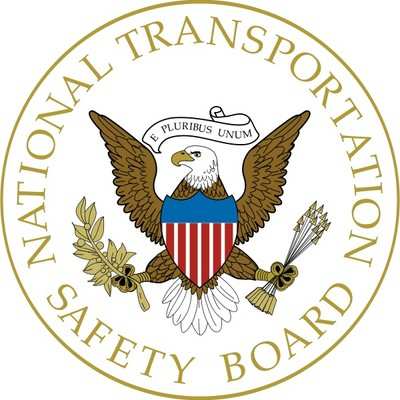Sat, May 18, 2024
Postaccident Examination Of The Engine Revealed That The Crankshaft Was Fractured At A Crank Cheek
Location: Creswell, Oregon Accident Number: WPR23LA184
Date & Time: May 9, 2023, 17:50 Local Registration: N468MM
Aircraft: RANS S-21 Aircraft Damage: Substantial
Defining Event: Loss of engine power (total) Injuries: 1 None
Flight Conducted Under: Part 91: General aviation - Personal

Analysis: The pilot had recently finished building the airplane and it had amassed about 55 hours of flight time on the airframe and engine (A UL Power Engine--Ed). While the pilot was maneuvering at about 700-900 feet above ground level (agl), the engine made “rough” sounds and vibrated. About 20 seconds later the propeller seized and the pilot made a forced landing in the field below.
A postaccident examination of the engine revealed that the crankshaft was fractured at a crank cheek, just aft of the journal of the No. 2 connecting rod. A materials analysis revealed that the crankshaft fracture resulted from fatigue cracks originating at the surface of the aft radius on the No. 2 rod journal, likely due to high operating stresses on the fillet radii. The metallic particles in oil filters suggested continuous wear on the bearing shells. The worn bearing shells most likely intensified the high operating stress in the crankshaft.
The source of the high operating stress acting on the crankshaft and severe wear of the bearings was not determined, but some out of range operating parameters recorded on the Engine Control Unit (ECU) could have contributed or been the source of these stresses, which led to fatigue cracks and severe wear of the bearing shells. Torque for the propeller flange was not measured, but the bolt, though not difficult to remove, likely lost preload torque due to the propeller striking the ground. There was no evidence that the crankshaft failure was a result of a material flaw or defect, and there is no discernible pattern, or recurring failures observed in the six-cylinder engine crankshafts.
Probable Cause and Findings: The National Transportation Safety Board determines the probable cause(s) of this accident to be -- A total loss of engine power caused by fatigue cracking and fracture of the crankshaft due to severe wear of the bearings.
More News
Light Gun A handheld directional light signaling device which emits a brilliant narrow beam of white, green, or red light as selected by the tower controller. The color and type of>[...]
“We have performed extensive ground testing by comparing warm up times, full power tethered pulls, and overall temperatures in 100 degree environments against other aircraft >[...]
While Taxiing To Parking The Right Landing Gear Leg Collapsed, Resulting In Substantial Damage Analysis: The pilot made a normal approach with full flaps and landed on the runway. >[...]
From 2014 (YouTube Edition): Exotic Rebuild Reveals Aerial Work Of Art During EAA AirVenture 2014, ANN's Michael Maya Charles took the time to get a history lesson about a great ai>[...]
Also: Project Talon, McFarlane Acquisition, Sky-Tec Service, JPL Earth Helo Tests Bombardier has earned a round of applause from the business aviation community, celebrating the fo>[...]
 ANN's Daily Aero-Term (12.13.25): Light Gun
ANN's Daily Aero-Term (12.13.25): Light Gun Aero-News: Quote of the Day (12.13.25)
Aero-News: Quote of the Day (12.13.25) NTSB Final Report: Gippsland GA-8
NTSB Final Report: Gippsland GA-8 Classic Aero-TV: Historically Unique -- Marlin Horst's Exquisite Fairchild 71
Classic Aero-TV: Historically Unique -- Marlin Horst's Exquisite Fairchild 71 Airborne 12.12.25: Global 8000, Korea Pilot Honors, AV-30 Update
Airborne 12.12.25: Global 8000, Korea Pilot Honors, AV-30 Update



